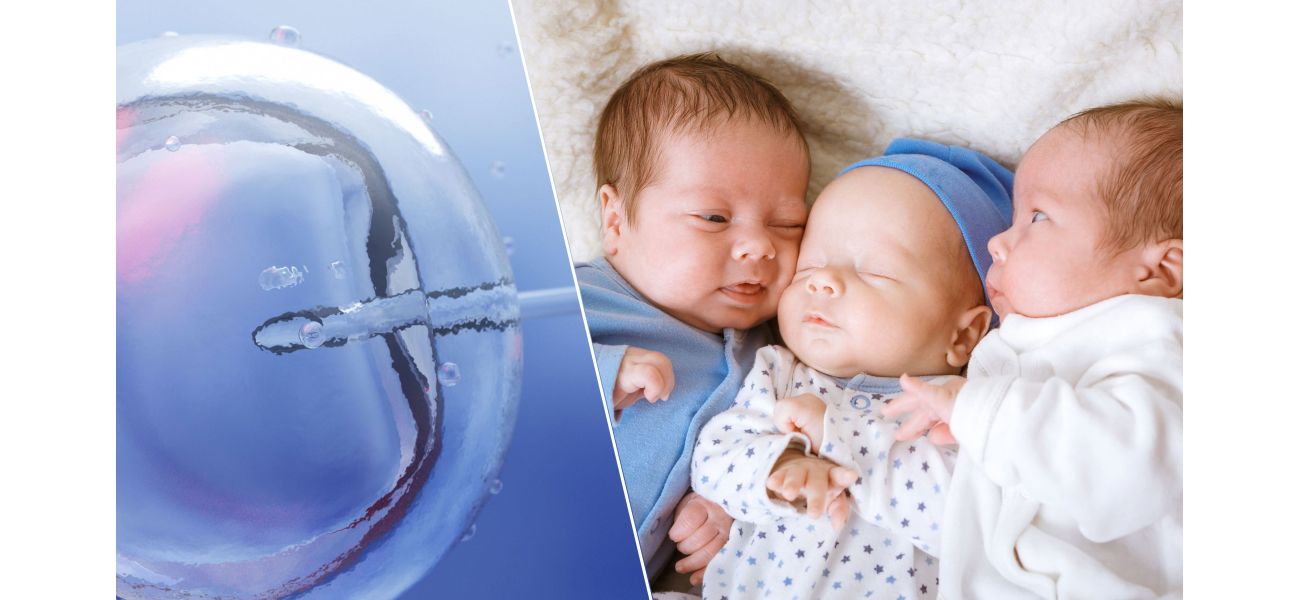Australia's IVF twin and triplet birth rate has sharply declined.
Australian IVF rates hit record low in 45 years, bringing hope to those struggling to conceive - Professor Chambers to 9News.
September 21st 2024.

The latest news from Australia's IVF industry has left fertility experts feeling elated. According to a report released by UNSW medical researchers, the birth rate for twins and triplets has reached an all-time low. This is a significant achievement, with only 2.7% of mothers conceiving multiple babies through IVF.
Professor Georgina Chambers, who works at the National Perinatal Epidemiology and Statistics Unit, shared this exciting news with 9News. She explained that this is the lowest multiple birth rate in the 45-year history of IVF in Australia. This is a positive result for couples who are struggling to conceive and need the help of IVF.
The 2022 Australian and NZ Assisted Reproduction Report, which contains the most recent statistics, revealed that the main reason for the decrease in multiple births is due to the increased use of single embryo transfers. Professor Chambers believes that this is a good thing because multiple pregnancies carry higher risks for both the mother and the babies.
She explained that babies born from multiple pregnancies are more likely to be born prematurely and face long-term health risks. This is why researchers and clinicians in the IVF industry have been working hard for many years to reduce the rate of multiple births.
Professor Chambers continued by saying that since the first IVF baby was born in Australia over 40 years ago, the multiple birth rate used to be over 20%. However, with the concerted efforts of the IVF industry, this rate has been significantly reduced to 2.7%. This is a remarkable achievement that has been made possible by only transferring one embryo in each cycle, which is now done in 95% of cases.
Despite this new approach, the success of IVF in Australia has not been affected. In fact, there has been an increase in success rates across all age groups. Professor Chambers believes that this is a testament to the hard work and dedication of the IVF industry.
While some couples may hope for multiple births, they are often unaware of the health risks involved. Professor Chambers explained that having twins can be a pleasant surprise, but it is not something that the IVF industry promotes or encourages.
She added that although the IVF multiple birth rate may never match the rate for natural births, this is great news for Australians who are struggling with infertility. Professor Chambers also praised Australia's world-leading IVF industry, which is generally more affordable than in other countries, such as the US, where it can cost up to $20,000 USD per cycle.
She believes that the more supportive funding environment in Australia allows couples to have the option of only transferring one embryo at a time, without feeling pressure to transfer multiple embryos in the hopes of a successful pregnancy. This not only reduces the risk of multiple births but also eases the financial burden on couples who are desperate to have a child.
In conclusion, the latest statistics from Australia's IVF industry are cause for celebration. The decrease in multiple births is a positive step towards ensuring the health and well-being of both mothers and babies. It also highlights the success of the IVF industry in Australia and the supportive funding environment that allows couples to have more control over their fertility journey.
Professor Georgina Chambers, who works at the National Perinatal Epidemiology and Statistics Unit, shared this exciting news with 9News. She explained that this is the lowest multiple birth rate in the 45-year history of IVF in Australia. This is a positive result for couples who are struggling to conceive and need the help of IVF.
The 2022 Australian and NZ Assisted Reproduction Report, which contains the most recent statistics, revealed that the main reason for the decrease in multiple births is due to the increased use of single embryo transfers. Professor Chambers believes that this is a good thing because multiple pregnancies carry higher risks for both the mother and the babies.
She explained that babies born from multiple pregnancies are more likely to be born prematurely and face long-term health risks. This is why researchers and clinicians in the IVF industry have been working hard for many years to reduce the rate of multiple births.
Professor Chambers continued by saying that since the first IVF baby was born in Australia over 40 years ago, the multiple birth rate used to be over 20%. However, with the concerted efforts of the IVF industry, this rate has been significantly reduced to 2.7%. This is a remarkable achievement that has been made possible by only transferring one embryo in each cycle, which is now done in 95% of cases.
Despite this new approach, the success of IVF in Australia has not been affected. In fact, there has been an increase in success rates across all age groups. Professor Chambers believes that this is a testament to the hard work and dedication of the IVF industry.
While some couples may hope for multiple births, they are often unaware of the health risks involved. Professor Chambers explained that having twins can be a pleasant surprise, but it is not something that the IVF industry promotes or encourages.
She added that although the IVF multiple birth rate may never match the rate for natural births, this is great news for Australians who are struggling with infertility. Professor Chambers also praised Australia's world-leading IVF industry, which is generally more affordable than in other countries, such as the US, where it can cost up to $20,000 USD per cycle.
She believes that the more supportive funding environment in Australia allows couples to have the option of only transferring one embryo at a time, without feeling pressure to transfer multiple embryos in the hopes of a successful pregnancy. This not only reduces the risk of multiple births but also eases the financial burden on couples who are desperate to have a child.
In conclusion, the latest statistics from Australia's IVF industry are cause for celebration. The decrease in multiple births is a positive step towards ensuring the health and well-being of both mothers and babies. It also highlights the success of the IVF industry in Australia and the supportive funding environment that allows couples to have more control over their fertility journey.
[This article has been trending online recently and has been generated with AI. Your feed is customized.]
[Generative AI is experimental.]
0
0
Submit Comment





